MK’s History Lesson (Page 2)
HMS Tyger versus Shackerloo
On the 23rd or possibly the 24th of February 1674 an odd and interesting single ship to ship action took place in the port of Cadiz Spain. For decades both the Dutch and English had been fighting the Barbary pirates of the Mediterranean (single ships and squadrons often assisting one another in this endeavor) in order to protect their mutual commercial interests in the Levant trade.
However, for the last several years leading up to this duel the Dutch and English had been tangling with one another in the Mediterranean (and around the globe) due to the Third Anglo-Dutch War (1672-1674). The English tried unsuccessfully to subdue the large and well armed Dutch Smyrna convoy. During that attack two of the characters of this story were present – Evertsen who defended the Dutch convoy and Harmon, a naval officer among the attacking English fleet. Globally speaking things went very badly for the English throughout the conflict with the Dutch enjoying an extensive advantage in sheer numbers of ships built and deployed around the globe.
Dutch privateering was devastating to English commerce as it had been during the last two Anglo-Dutch wars – which were largely fought over commercial imbalance issues and regulation (NAVIGATION ACTS ).
England entered the war largely because of her king. King Charles II still seethed with anger about the humiliations suffered a few years prior at the end of the Second Dutch War which ended disastrously – with the Dutch forcing the English to the peace table. After a month long blockade of the Thames the Dutch conducted a daring three day raid up the Medway where they destroyed the laid up English fleet at Chatham, captured the flagship Royal Charles and towed her back to Amsterdam as a prize amid a mass panic in England where London was evacuated fearing the Dutch would sack the city.
Charles formed an English alliance with King Louis XIV of France who promptly invaded the United Provinces overland in 1672. The English hoped to make Holland into a “rump” puppet state while giving France the southern fortress cities. In order for this to work the Dutch had to be defeated at sea so that the English and French could effectively blockade the Dutch ports – choking off any outside relief and supply from East and West India Company(VOC & WIC) convoys and creating stable conditions in which to safely land English troops on Dutch soil for joint action with the French invasion forces.
Virtually nothing went as expected or planned. William the Stadholder of the Netherlands ordered the dyckes to be broken denying the French access to foraging, supplies or freedom of land manuever over the Dutch countryside. The heavily fortified Dutch cities found themselves under siege by thousands of French troops. The French, often up to their waists or chests in water, found themselves between local defenders atop formidable city walls and simultaneous outward assailants as William regularly attacked them with musketeer regiments riding aboard shallow draft barges.
At sea the combined allied French and English fleet blockades were broken time and time again. In four great sea battles, Solebay, The Texel, and the two battles of the Double Schooneveld, the Dutch managed to break the blockades and defeat their opponents in running engagements that ended in English waters. Many English historians try to claim that these battles were “tactical draws” but I personally find this laughable considering the circumstances and the actual outcome. Detailed study of those battles clearly illustrate that the Dutch successfully broke the blockades allowing their trading fleets to safely enter home ports, and soundly defeated the combined allied Anglo-French fleets which outnumbered them. In addition, the strategic ramifications were that the English were never able to land armies to assist their French allies.
While this war raged on in home waters, Dutch privateers seized hundreds of English prizes abroad once again bringing English commerce to the verge of collapse. This war was extremely unpopular in England – especially with the merchant class and Parliament. In addition, accusations that the King had secretly become Catholic in order to secure the clandestine Treaty of Dover with the French caused the staunch Protestant Parliament to boil in conspiracy theories. Many believed the King was going to try to make England Catholic again.
With the fleet badly battered, the treasury bankrupt with no money to repair it – or for that matter pay the military/navy once again – and with no successes in the offing to show for their trouble, Charles went to Parliament to disavow any involvement in the “secret” Treaty of Dover and to recommend offering the Dutch peace. Dutch spies had already supplied key members of Parliament with damning evidence concerning the king’s private involvement with France. This situation compounded with the stubborn Dutch resisting all attempts at invasion and in fact going on the counter-offensive with new continental alliances, gave Charles really no other choice but to pursue a quick and as quiet as possible peace. Parliament so glad that the King had finally “come to his senses”, was gladly able to forgive him considering their desired peace with the Dutch was the ultimate outcome.
However, before word of this official peace treaty (ratified on February 17th) could be made public and sent out to all concerned combatants – a battle would take place a few days after between men and ships who had no idea the war was already over. In the neutral port city of Cadiz Spain, both English and Dutch warships were a regular and welcome sight for their help in keeping the sea lanes around Gibraltar and the Mediterranean free of Barbary pirates. On 24 February 1672 Dutch Commodore Jacob Binckes was resting and reprovisioning his Squadron in Cadiz after a long cruise from the Caribbean up the Atlantic seaboard and into the Med. (Binckes who is a character in GOF ERAS2, was later well known for his valiant defense of Tobago against the French: see LINK Binckes Defense of Tobago) *NOTE: The Dutch and Spanish were also allies at this time and the Dutch operated with a notable and regular presence in many Spanish ports.
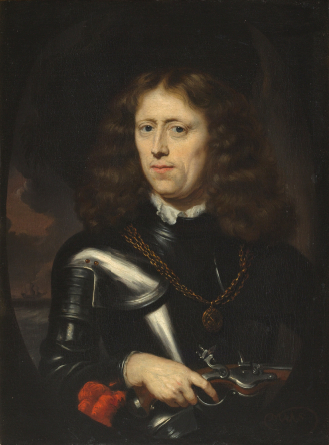
Commodore (Schout-bij-nacht) Jakob Binckes

Admiral Cornelis Evertsen the Youngest “Kees the Devil”
Binckes with his famous second in command Cornelis Evertsen the Youngest “DeJongst” (Keesje den Duvel “Little Cornelis the Devil”) – given this nickname because of his well known fighting spirit and hot temper – [also a character in ERAS2]) were both well known for their audacious privateering/raiding exploits, teaming up with an additional squadron from Zeeland and reeking havoc upon the English and French colonies and shipping across the Caribbean. With the strength of these combined “confederate” squadrons, Binckes decided to ignore his orders to seize English Saint Helena and French Cayenne and instead to raid up the Atlantic seaboard and re-secure New Amsterdam (New York) into Dutch hands. (*NOTE: New Amsterdam/New York had been ceded to England as part of the Treaty of Breda after the Second Dutch war. In exchange the English abandoned their claims in Dutch Surinam and several small trading colonies located there. They also ceded their only claimed and occupied spice islands “Ai and Run” in the East Indies (Banda spice island chain) to the Dutch allowing them to enjoy their desired total monopoly of the Spice trade.)
In 1673 Binckes and Evertsen conducted raids deep into Chesapeake Bay destroying dozens of rich Colonial English estates/plantations. (*NOTE: The skirmishes fought between landed Dutch Marines and English colonial militia mark the first known occurrences of land battles between European powers in English held North America).
In another interesting side event, Binckes and Evertsen happened upon the fully loaded Maryland and Virginia tobacco fleet of over twenty some odd ships just getting underway for England. The Dutch attacked and destroyed two privately contracted English frigates defending the bay at a battle near Hampton Roads. The Maryland and Virginia tobacco fleet’s armed merchantmen (which the frigates were defending) also took part in the battle but seeing they were no match for the large Dutch Confederate naval squadron fled. At least four ships intentionally ran themselves aground to deprive the Dutch of their prizes. Others successfully fled up river. In the end the Dutch confiscated the cargoes of the ships that ran aground and set them ablaze.
They managed to capture eleven fully loaded tobacco ships in all which they sent to Amsterdam via the Azores. This marked the end of the confederate activity and the
Zeelanders returned to the Netherlands while Binckes and Evertsen remained behind in New York/New Amsterdam for a short time.
So a few months later, we find Binckes and Evertsen with their single squadron back in Europe ready to take on the Barbary corsairs of the Med. Evertsen was careening and refitting his ship, the 44 gun Zwanenburg, at Cadiz and she was “on the hard” pulled onto her side when on February 24th, the English Warship HMS Tyger (46 gun fourth rater) appeared in Cadiz harbor intending to reprovision and give liberty to her crew – tired from patrolling against Mediterranean Barbary corsairs for months and cruising the straits outside of Tangiers for the last several weeks.
Just an hour or more before the Tyger entered Cadiz, a single small 28 gun Dutch “fregat”, the Shackerloo commanded by the young but experienced Captain Passchier De Witte, entered the Bay of Cadiz. De Witte like Evertsen was a member of an elite Dutch naval family whose famous members had made great names for themselves for generations. De Witte’s own grandfather, Admiral With De Witte had been killed by the English in 1658 at the Battle of the Sound during the First Anglo-Dutch War. The Shackerloo was De Witte’s second command. He had commanded a similar ship (the Zwolle) during the Second Dutch War.
Evertsen was already unhappy when the Tyger boldly entered Cadiz like nothing was to be feared with the significant Dutch presence obvious and notable in the bay. When the Tyger’s commander Captain Thomas Harmon landed ashore he began to loudly and openly boast to Spanish authorities and in the local watering holes that he had chased the Shakerloo into the safety of the neutral port. Evertsen became infuriated, because this was an obvious taunt against the Dutchmen suggesting that they were afraid of the Tyger and rather than offering battle in the open sea, took the more cowardly action of running into the safety of the neutral port. It was a bold affront not only to De Witte, but to all of the Dutchmen then on station in Cadiz.
Young Thomas Harmon had risen up the ranks quickly showing great bravery as the First Lieutenant of the HMS Adventure during the Battle of Solebay just a few years earlier. For his actions he was given a Captain’s commission and command of the HMS Tyger. Shortly after assuming this position he found himself in the heat of battle against the Dutch. His first action aboard Tyger was to escort a large fleet of returning grain colliers from the Bay of Biscay through the English Channel and safely into the Thames. Upon entering the English Channel the merchant fleet came under attack by a force of Dutch privateers. Harmon found himself and the Tyger under attack by eight of the swarming little Dutch warships and successfully held off their attacks for hours during repeated attempts at boarding and taking the Tyger.
Although the Dutch did manage to cut out numerous merchant prizes from the collier fleet, the majority of it did reach the Thames. From a close examination of the painting below we can see that Harmon was not alone. Indeed it appears there is another English fourth rater to the rear of the Tyger also fighting off Dutch privateers. I have not yet been able to ascertain what ship it is. However, its clear that if these two warships had not been present, its likely the entire fleet of merchantmen would have fallen prey into Dutch hands. Regardless of the fearsome reputation of Dutch privateers to take on ships larger and better manned than themselves, Harmon not only did not fall prey, but prevailed and beat off their attacks.
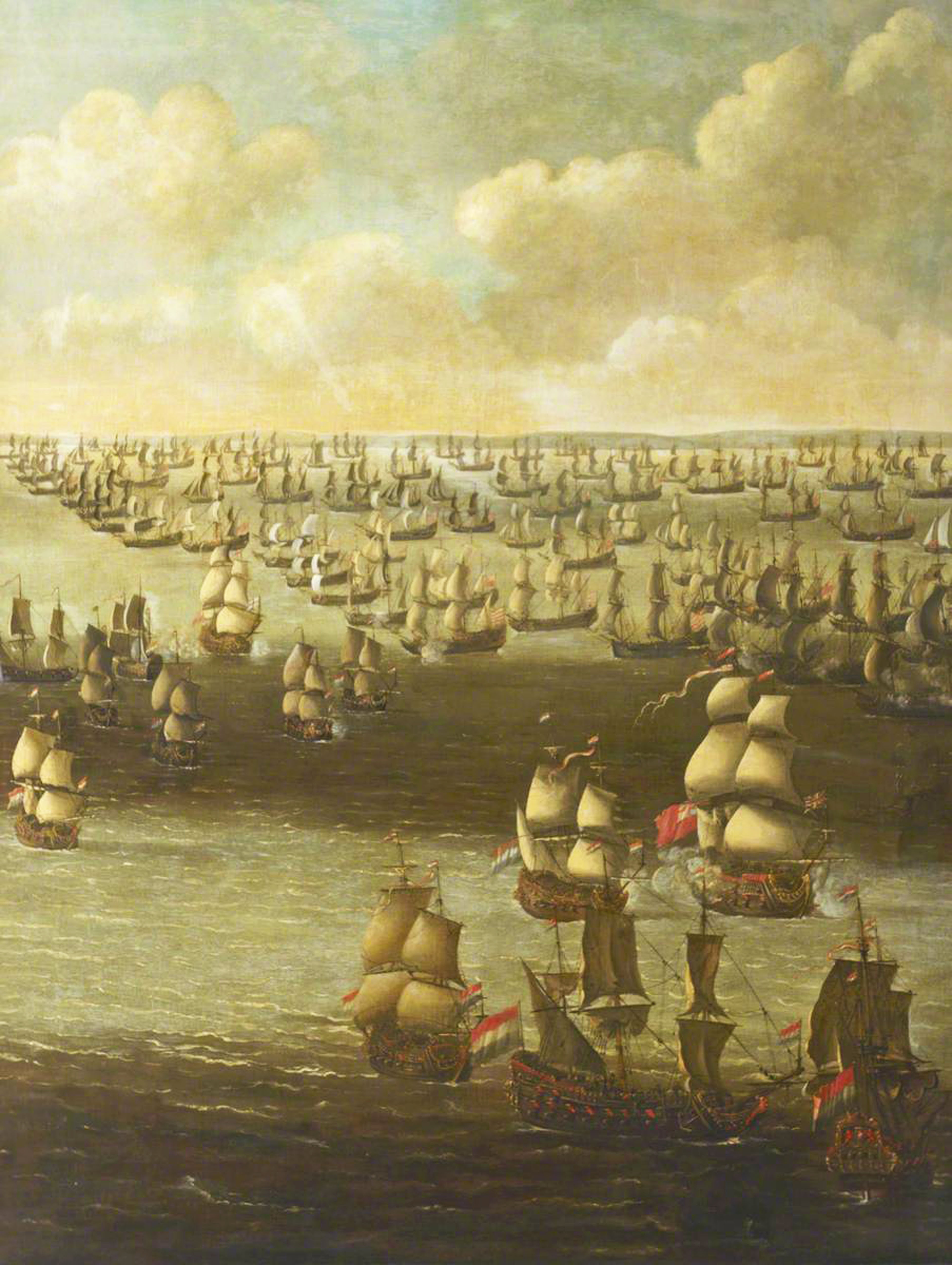
Schellinks, Daniel; HMS ‘Tiger’ Attacked by Eight Dutch Privateers, 26 August 1672; National Maritime Museum; http://www.artuk.org/artworks/hms-tiger-attacked-by-eight-dutch-privateers-26-august-1672-175498
HMS ‘Tiger’ Attacked by Eight Dutch Privateers, 26 August 1672 by Daniel Schellinks: Courtesy of National Maritime Museum, Greenwich UK
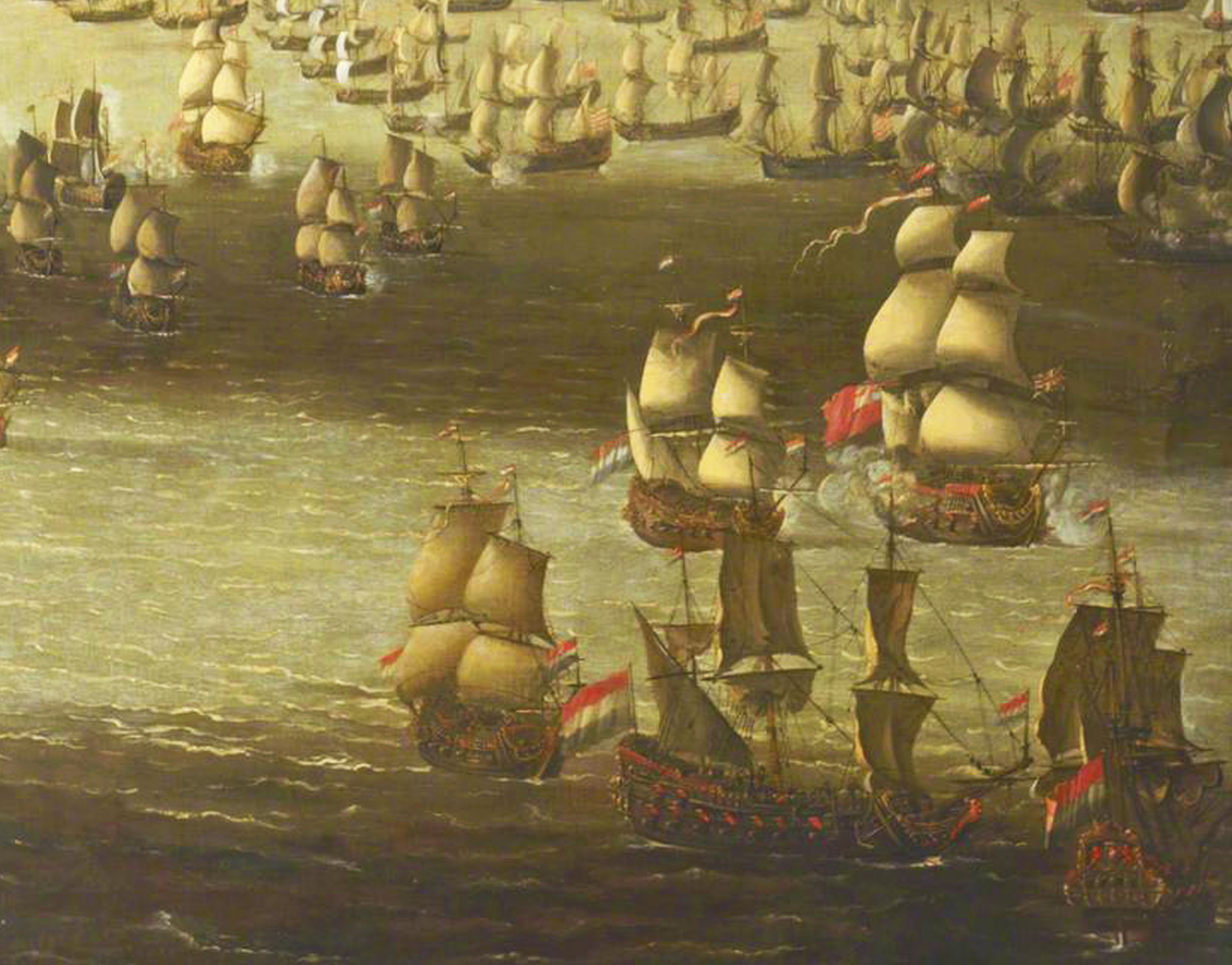
Schellinks, Daniel; HMS ‘Tiger’ Attacked by Eight Dutch Privateers, 26 August 1672; National Maritime Museum; http://www.artuk.org/artworks/hms-tiger-attacked-by-eight-dutch-privateers-26-august-1672-175498
So although Harmon might have been a braggart, he was not without a formidable reputation in battle. Evertsen felt helpless with his own ship nearly equal in size and firepower to the Tyger being laid up on its side – its rigging dismantled and being overhauled and its bottom being scraped and re-caulked. Evertsen being a superior officer to DeWitte approached him and demanded he defend his reputation. De Witte loudly protested that he had never even seen the Tyger behind him when he entered Cadiz. We cannot know now who was telling the truth or not. However, we do know that the Shakerloo had also been patrolling the Strait of Gibraltar for pirates and/or easy French or English prizes. It is very likely that entering port only an hour apart that the two ships could have been distantly discernible from one another. In addition Shakerloo probably enjoyed a faster speed in most sailing conditions to Tyger.
Evertsen demanded that “for the honour of the States Flag” that De Witte must challenge Harmon to battle. De Witte rightly complained to Evertsen that he was clearly outclassed by the Tyger which twice out-gunned the Shakerloo and probably had over twice her men as well with a crew complement of likely 280 to 300 men. The Shakerloo probably had 120 men on a good day. Evertsen volunteered 70 of his own officers and men from the Zwanenburg which brought Schackerloo’s crew up to around 200 men. With Dutch hubris and voracity well known and boarding preferred over gunnery in action, the Dutch believed they could easily capture Tyger despite her larger size, superior armament and larger crew of seasoned veterans. So the challenge was issued by Kapitein De Witte and gladly accepted by Captain Harmon.
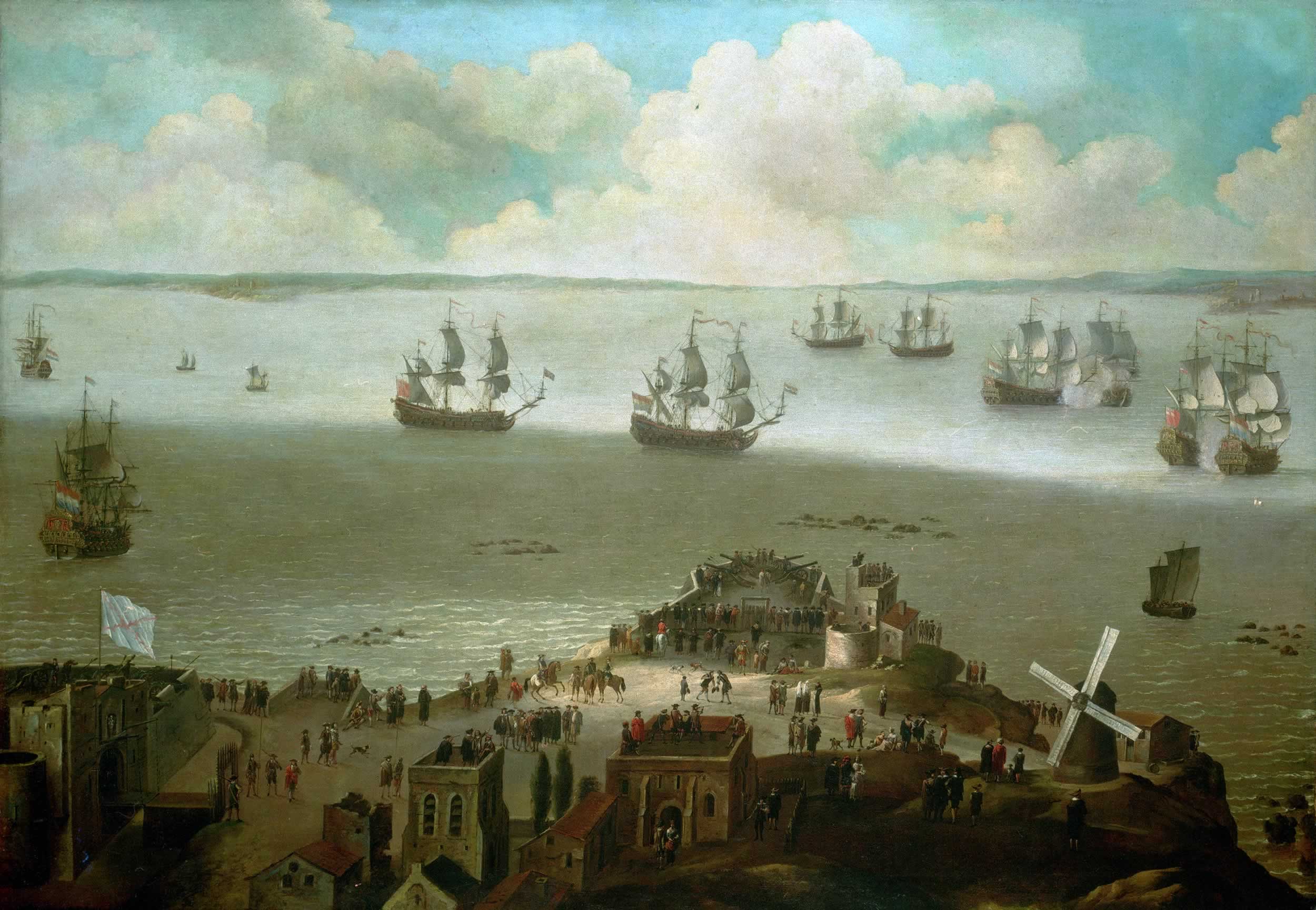
HMS Tiger taking the Schakerloo in the harbour of Cadiz 23 February 1674 by Daniel Schellinks: Courtesy of National Maritime Museum, UK
In the painting above we see the only existing artistic depiction of the duel between the Shakerloo and Tyger. The painting gives the impression that there are several English and Dutch ships engaged in action. However this is not the case. As other contemporary paintings of sea duels also depict, this is an illustrative attempt to show the events of the battle occurring over several hours of time and we see the two ships engaged in various different positions over the course of the duel. The painting also illustrates that the Shakerloo is equal in size to the Tyger which is clearly inaccurate. She would have been the size of the little privateers we see in the painting previous illustrating the Tyger surrounded. I have not been able to find an actual drawing of the Shakerloo, but this Van de Velde rendering of a small Dutch “fregat” I am certain resembles her. In addition here is a picture of a model of the Witte Paard which was a similar contemporary ship to her type. Also note the painting by Arnolde de Lange. The ship in the center is typical of the small Dutch Kleine Fregat class ships of which the Shackerloo is representative. In English terms she would have been classified a “Sloop of War” but the Dutch had no such classification in their navy.

Van de Velde rendering of small Dutch fregat

Van de Velde, Dutch fregat underway

Witte Paard (White Horse)
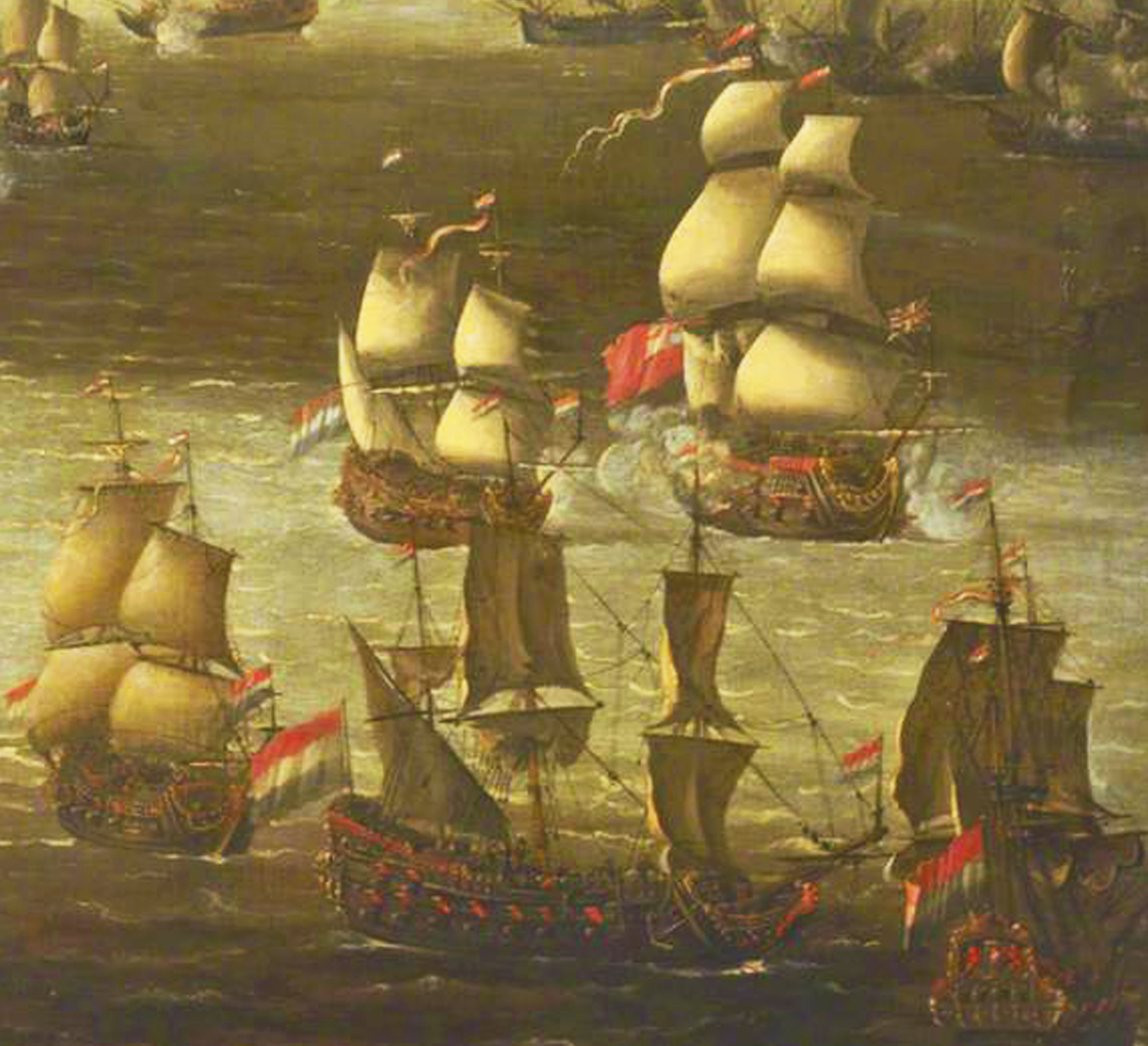
Schellinks, Daniel; HMS ‘Tiger’ Attacked by Eight Dutch Privateers, 26 August 1672; National Maritime Museum; http://www.artuk.org/artworks/hms-tiger-attacked-by-eight-dutch-privateers-26-august-1672-175498
We see an almost carnival-like atmosphere in the painting of the battle, with the locals all out to observe the interesting duel in the harbor. We can observe the formidable fortifications of Cadiz and soldiers and citizens pointing at and discussing the battle. It is also interesting to note that the Spanish navy is clearly in control of the port fortifications. If the post were manned by the army the red cross of Burgundy would be seen emblazoned upon a yellow flag. However note the thin cross of Burgundy on a white flag atop the fort which was the naval version. We see other Dutch ships to the left – probably some of Binckes squadron.
The battle took place over much of the day. The Shakerloo made numerous heroic attempts at boarding the Tyger – all unsuccessful. We see in the distant center of the painting the final attempt and Tyger’s successful counter attack and boarding of the Shakerloo. The Dutch flag is seen lowered and replaced with the red English ensign. Clearly the Dutch had underestimated English fighting prowess and their bold hubris was their own undoing. The final numbers were 50 Dutchmen killed (including DeWitte) and 70 wounded and the remaining crew captured. The English lost only 24 men – no numbers are recorded for their wounded.
Binckes was clearly annoyed with Evertsen’s meddling and now stepped in. The Commodore(Schout-bij-nacht) with an entire squadron of at least twelve ships in Cadiz and possessing several warships superior in firepower and men to the Tyger, sent his complements to Captain Harmon and asked for the return of the ship and her crew to Binckes.
With the Tyger fairly shot up from the battle and his crew exhausted, Harmon was in no position to resist the Dutch demands and complied with Binckes request. Only a day later was it learned that the English and Dutch had been at peace for a week’s time already.
In the aftermath, Cornelis Evertsen was brought up on charges with the Admiralty of Zeeland for exceeding his mandate and disobeying orders. The Admiralty and the Staats Generaal were unhappy about him retaking New York and it was returned once again to the English for the final time as part of the Treaty of Westminster. He was able to exonerate himself and replaced his cousin Cornelis Evertsen the Younger as the Vice-Admiral of Zeeland. He went on to greater glory holding off the brunt of a massive French fleet of 74 warships with only a squadron of 20 Dutch ships for a good part of the day at the Battle of Beachy Head – with no English help. He eventually replaced Tromp as supreme commander of the Dutch Confederate Navy. Cornelis Evertsen the Youngest
Thomas Harmon returned to England a hero. The final battle of the war was an English victory despite the fact that the war was already over. It allowed the English to lick their wounds with dignity as there had been no clear English victories for the course of the entire war.
The Tyger went on to many more grand adventures being a very long lived ship and was rebuilt several times. Her final rebuild was at Sheerness Dockyard, where she was relaunched on 12 November 1722 as a 50-gun fourth rate to the 1706 Establishment. Her final assignment was prize hunting and blockade duty off of Havana Cuba during the War of Jenkin’s Ear. While hunting she ran aground upon a reef on the Dry Tortugas on January 11th 1742. The ordeal of the crew afterwords makes for a fascinating story in itself. She was only five years short of being a hundred years old. HMS TYGER
We end with some Van de Velde illustrations of this wonderful ship (*NOTE that the last painting is not the Tyger but the HMS Woolwich which is so similar to Tyger she could almost be a sister ship. What a fascinating story this is and I had loads of fun researching and bringing it to you – straight from the REEF! MK
by modernknight1 with no comments yet.
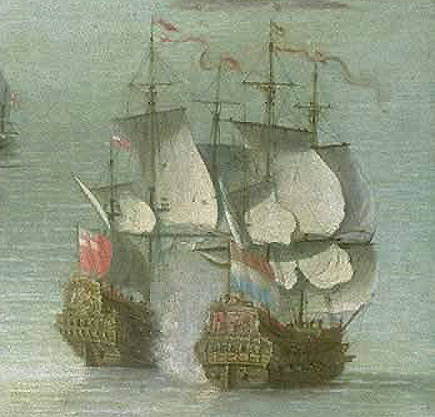
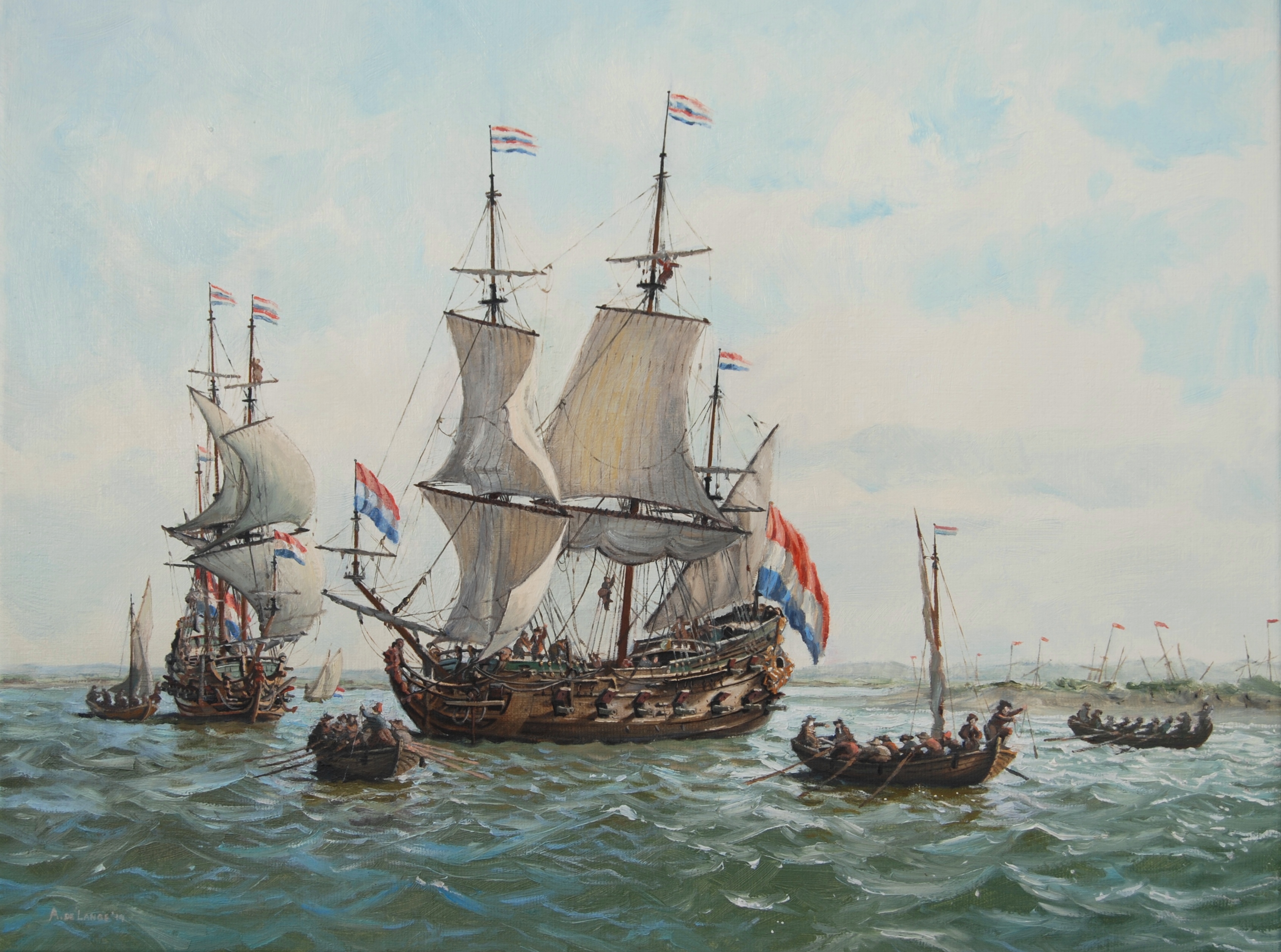
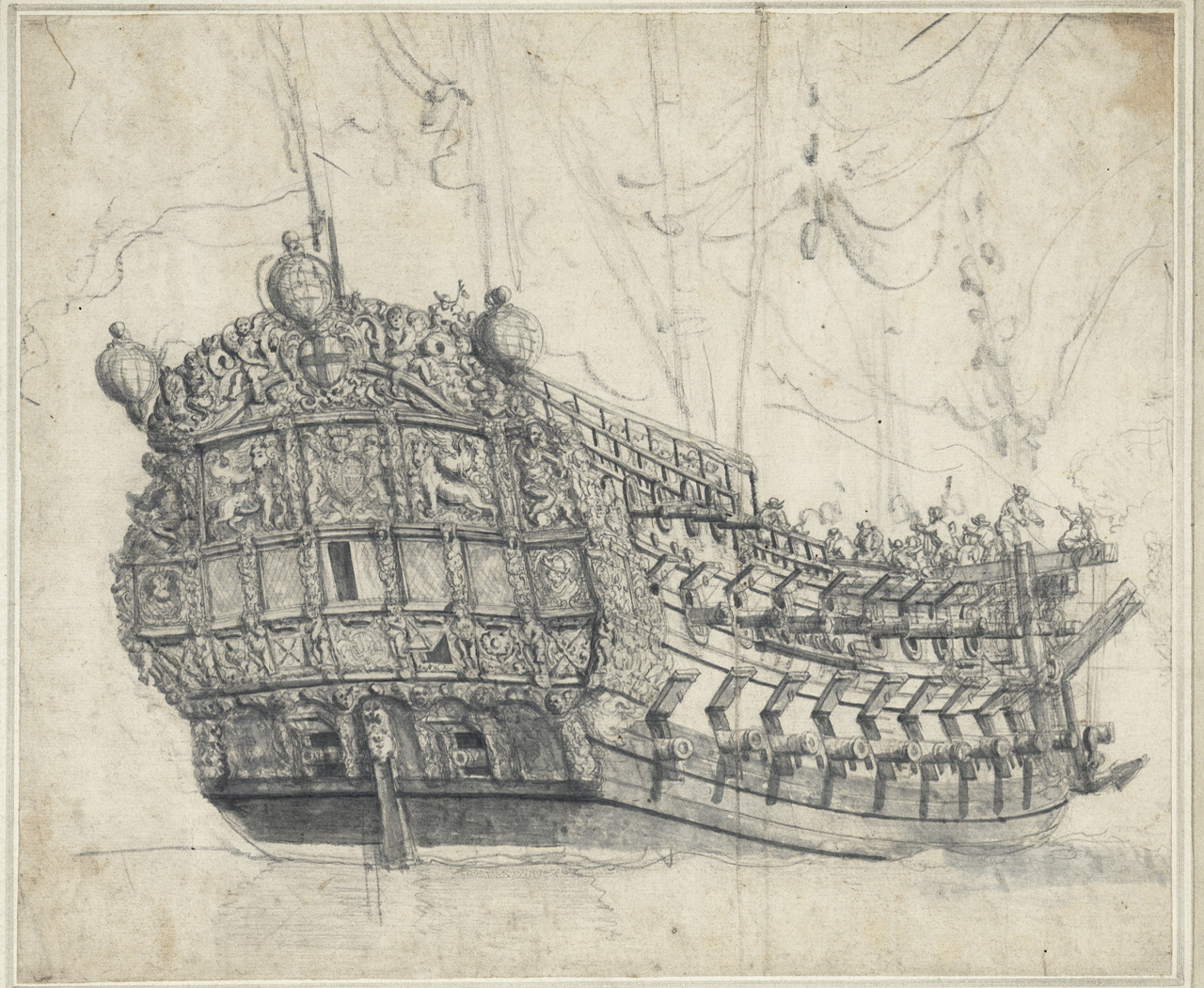
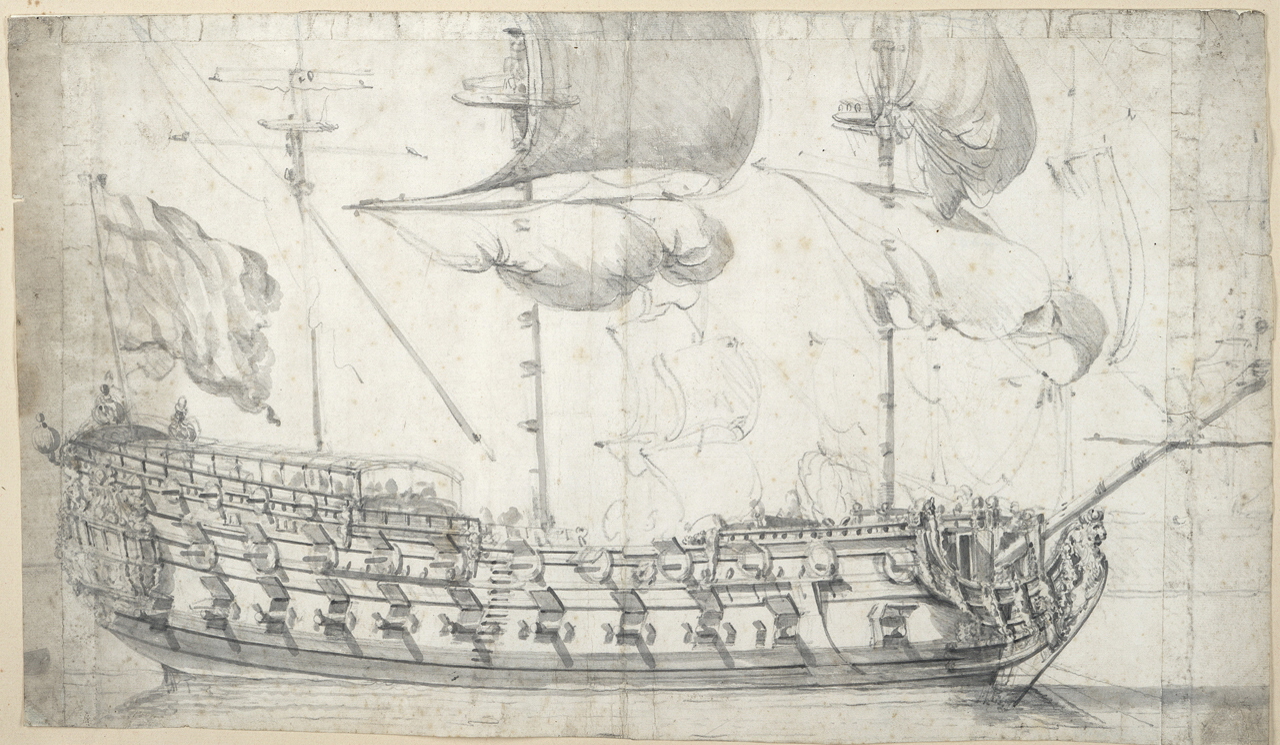
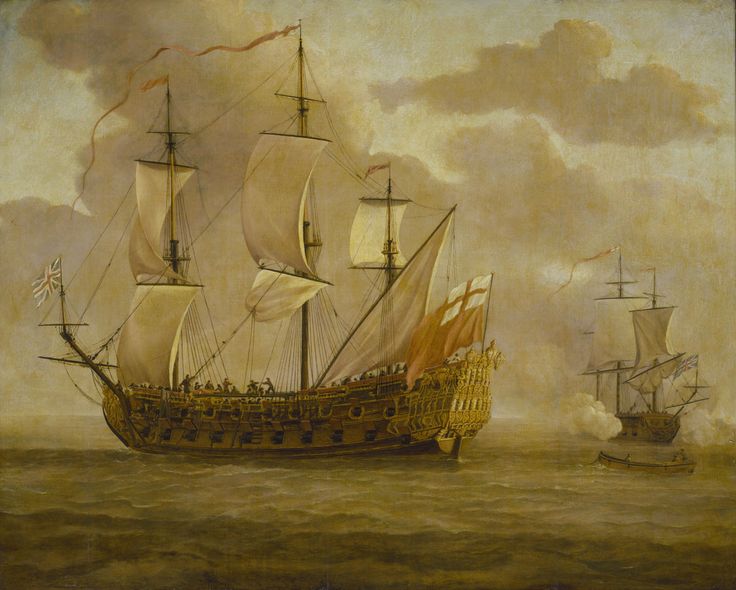
Leave a Reply
You must be logged in to post a comment.